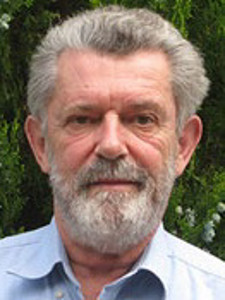Date: Thursday, October 2, 2025
Time: 12:30 PM to 1:45 PM
Location: CHTM, Room 103 & Zoom
Speaker:OSE General Chair, Dr. Jean-Claude Diels, Professor, UNM Physics and Astronomy Department
Abstract:
For millennia, light emitted by stars has been the only window into the universe. There are, however, objects so massive as to trap light and are therefore invisible. These “black holes” can emit another type of radiation- Gravitational Waves (GW) that, unlike light, interact very weakly with matter, and therefore carry information about their origins that is free of distortion. GW were detected for the first time by the Laser Interferometer Gravitational-Wave Observatory (LIGO) in 2015 (discovery awarded the Nobel prize in 2017). This talk is about assembling a team about an idea to create a table-top Gravitational Waves detector in the frequency range of 0.001 to 5 Hz.
The idea has been endorsed by David Reitzer, Director of LIGO, who wrote a letter of support for a proposal to the Simons Foundation. It may be just a dream, but so was LIGO when a team of Scientists proposed it more than 40 years ago.
Biography:
Jean-Claude Diels started his career in Research constructing a CO2 laser as part of his one-year military service (too long) in Belgium. He went then for 5 years (much too long) as a Research Scientist in the fundamental Research laboratories of “Philips Gloelampenfabrik” in Eindhoven, with assignment to “do modern research” with “unlimited budget (which was soon exceeded). The next 3 years (way too short) were spent on Ph.D. thesis research on coherent pulse propagation in two level systems with Professor Erwin L. Hahn at UC Berkeley. An advice: when you have a good advisor, don’t rush to graduate – stck to him as long as he can stand you. After two years spent at the Max Plank Institute with Professor Fritz Schaefer, the colorful (usually covered with red) father of dye lasers, he got an appointment as Research Assistant – then Associate – Professor at the University of Southern California (“What??? I have to raise my own salary?”). After some experience at the “Centre d’Energie Atomique” of Saclay with Pierre Agostini (our latest Nobel prize) near Paris (not the Texan Paris), and before the collapse of the Center for Laser Studies at USC, he moved to the CAQE (Center for Applied Quantum Electronics) of the University of North Texas in Denton, where he stayed for 5 long years, interrupted by (a breath of fresh air) a sabbatical at the University of Bordeaux, France. He has been since … (much much much much much much much much too long) at the University of New Mexico, where he graduated (so far) 59- PhD students. He co-authored with Wolfgang Rudolph the graduate textbook Ultrashort Laser Pulse Phenomena: Fundamentals, Techniques and Applications on a Femtosecond Time Scale and with Ladan Arrisian of the book, Lasers: The Power and Precision of Light, which celebrates the 50th anniversary of the laser, published 7 book chapters and edited a book on light filaments). He is the recipient of the 51st Annual Research Lecturer Award (April 2006), and of the 2006 Engineering Excellence Award of the Optical Society of America.

